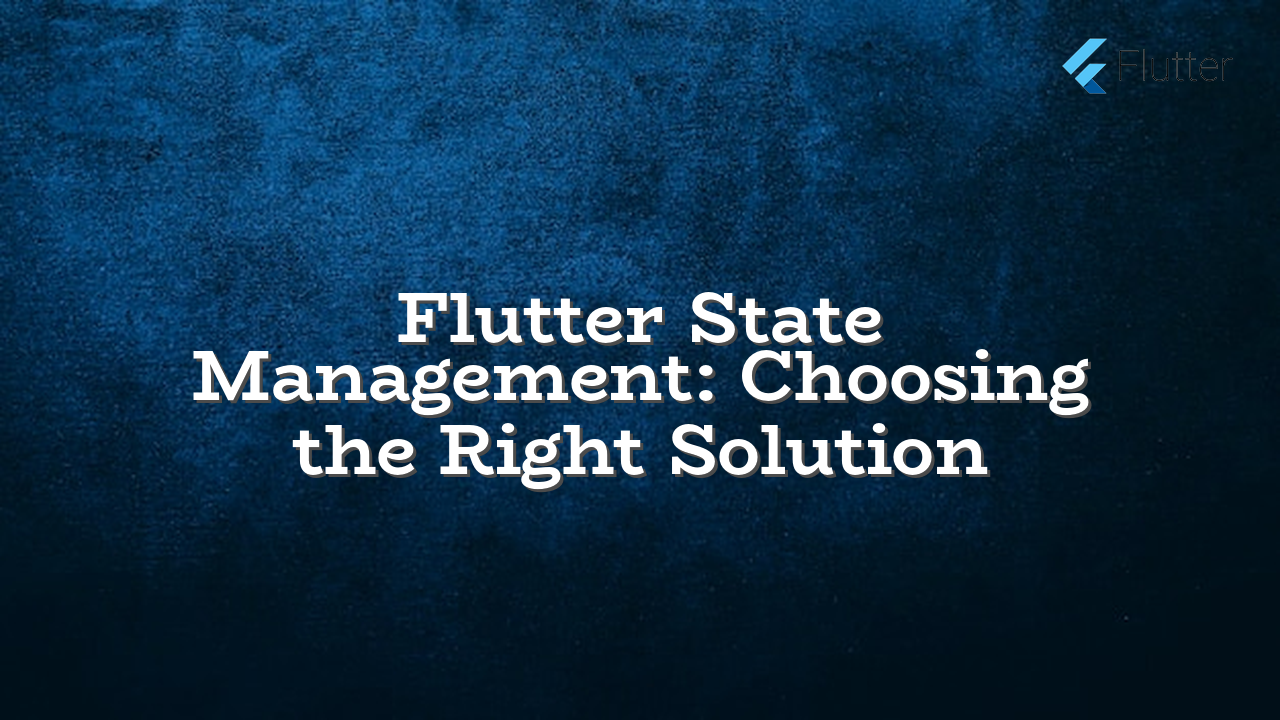Choosing the right state management solution for your Flutter application is crucial for maintainability and scalability. This article explores popular options, highlighting their strengths, weaknesses, and use cases. We will also cover potential issues and how to resolve them.
Understanding State Management in Flutter
State management is a critical aspect of Flutter development, especially for complex applications. It deals with managing the state of your application, ensuring data consistency and updates across different parts of the application. The choice of state management depends on factors such as application complexity, data flow requirements, and team familiarity.
Popular Flutter State Management Solutions
- Provider: A widely used package for state management. It’s generally easy to learn and use, especially for simple to moderately complex applications. Its flexibility allows for various patterns, making it adaptable to different needs.
- Riverpod: A state management package built on top of the Provider package. It offers a more structured approach, particularly when working with asynchronous operations and complex interactions. This approach promotes better code organization and testability.
- BLoC (Business Logic Component): Designed for complex applications, the BLoC pattern separates application logic from the UI. This separation enhances testability and maintainability. It’s often favored when handling large amounts of data or when the UI interaction requires intricate logic.
- InheritedWidget: Simple for small apps but can become unwieldy for more complex projects. Its use relies heavily on widget nesting, leading to less modularity.
Choosing the Right State Management Solution for Your Project
There’s no single “best” state management solution. The optimal choice depends on your project’s requirements:
| State Management Solution | Complexity | Flexibility | Maintainability | Use Cases |
|---|---|---|---|---|
| Provider | Moderate | High | Good | Simple to moderately complex apps, dynamic data |
| Riverpod | Moderate to High | High | Excellent | Asynchronous operations, complex state management patterns |
| BLoC | High | Moderate | Excellent | Large-scale applications, complex UI logic, multiple layers of interaction |
| InheritedWidget | Low | Low | Poor | Very simple applications, minimal state |
Example using Provider
import 'package:flutter/material.dart';
import 'package:provider/provider.dart';
// Define the data class
class Counter with ChangeNotifier {
int _count = 0;
int get count => _count;
void increment() {
_count++;
notifyListeners();
}
}
// Widget using the Provider
class CounterScreen extends StatelessWidget {
@override
Widget build(BuildContext context) {
return ChangeNotifierProvider(
create: (context) => Counter(),
child: Scaffold(
appBar: AppBar(title: Text('Counter')),
body: Center(
child: Consumer(
builder: (context, counter, child) {
return Text(
'Count: ${counter.count}',
style: TextStyle(fontSize: 24),
);
},
),
),
floatingActionButton: FloatingActionButton(
onPressed: () {
Provider.of(context, listen: false).increment();
},
child: Icon(Icons.add),
),
),
);
}
}
Potential Errors and Troubleshooting
Common issues include:
- Incorrect Provider usage: Ensure you’re using
ChangeNotifierProviderfor classes that notify listeners. Using the incorrect provider type can lead to unexpected behavior. - Incorrect access to Provider: Avoid using
Provider.of(...)within a build method of aStatefulWidgetwithoutlisten: false. If thelisten: trueis passed in, the build method will be called repeatedly, potentially causing performance issues. - Circular dependencies: Be mindful of potential circular dependencies between providers, which can result in errors or infinite loops.
- Asynchronous operation errors: When dealing with asynchronous operations, carefully handle potential exceptions or use error handling mechanisms.
Thorough testing and debugging are vital when implementing state management. Pay close attention to potential data flow issues. Always double-check that the provider is correctly set up.

